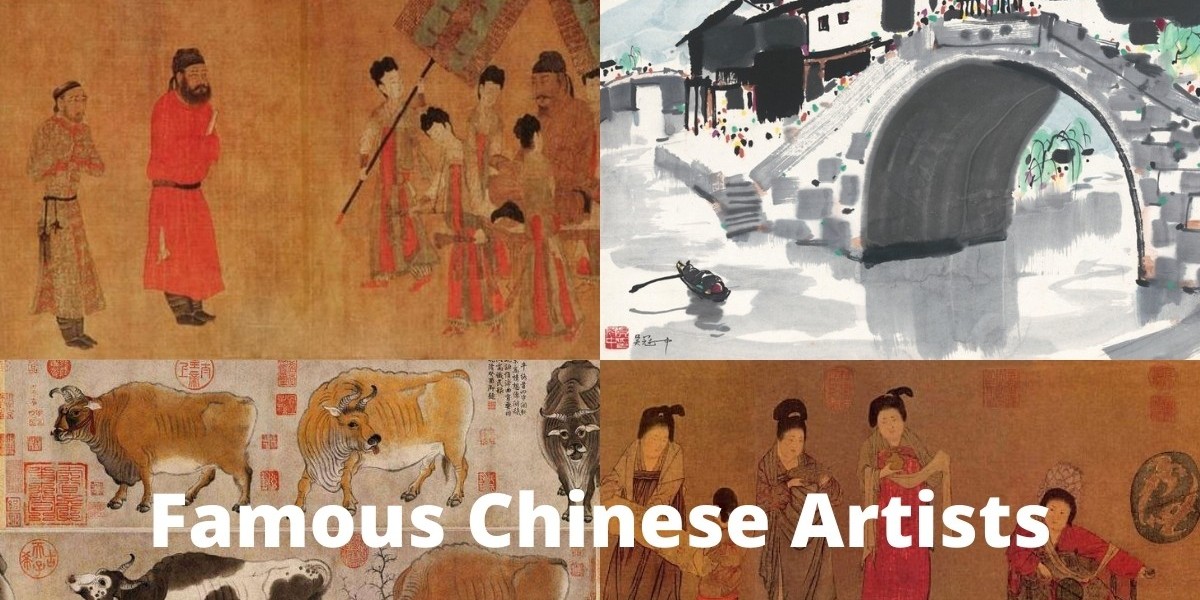China’s rich artistic history has produced countless influential figures who have shaped the global perception of art. Among these luminaries, some have gained international recognition for their groundbreaking work in traditional and contemporary art forms. Ink painting, deeply rooted in Chinese culture, has evolved significantly over the centuries. One artist who stands out in the realm of contemporary ink painting is Xu Bing.
Xu Bing is celebrated for his innovative approach that bridges traditional Chinese artistic practices and modern sensibilities. Born in Chongqing in 1955 and raised in Beijing, Xu Bing’s artistic journey reflects the social, political, and cultural changes that have defined modern China. His unique perspective and experimental techniques have earned him a place among the most famous Chinese artist of our time.
Early Life and Influences
Xu Bing grew up during the Cultural Revolution, a period of immense upheaval in China. His early exposure to art came from the propaganda materials he encountered during this time. These experiences would later influence his work, as he explored themes of communication, identity, and cultural heritage.
After the Cultural Revolution, Xu Bing studied printmaking at the Central Academy of Fine Arts (CAFA) in Beijing, where he eventually became a professor. His academic background provided him with a deep understanding of traditional Chinese art forms, which he reimagined in his contemporary creations.
Landmark Works
One of Xu Bing’s most notable contributions to the art world is his work “Book from the Sky.” Created in the late 1980s, this monumental installation features thousands of hand-carved Chinese characters that are completely illegible. The piece challenges the viewer’s assumptions about language and meaning, reflecting the complexities of communication in a rapidly globalizing world.
“Book from the Sky” sparked widespread debate upon its debut, with critics praising its ingenuity and others questioning its subversion of traditional Chinese calligraphy. Despite the controversy, the work solidified Xu Bing’s reputation as a leading figure in contemporary Chinese art.
Another groundbreaking project is “Square Word Calligraphy,” a series that transforms English words into forms resembling Chinese characters. This innovative technique exemplifies Xu Bing’s ability to merge different cultural elements, creating a visual language that resonates with audiences worldwide.
Contribution to Contemporary Ink Painting
While Xu Bing is renowned for his installations and conceptual art, his contributions to contemporary ink painting are equally significant. By integrating traditional techniques with modern concepts, he has expanded the boundaries of this ancient art form. His work often incorporates themes of environmentalism, globalization, and the interplay between tradition and modernity.
One notable example is his “Landscript” series, where he uses Chinese characters to depict natural landscapes. This series highlights Xu Bing’s mastery of ink painting while showcasing his innovative approach to visual storytelling. The combination of text and imagery invites viewers to reconsider the relationship between language and art, offering a fresh perspective on traditional practices.
Recognition and Legacy
Xu Bing’s contributions to the art world have earned him numerous accolades, including the prestigious MacArthur Fellowship, often referred to as the “Genius Grant.” His works have been exhibited in major museums and galleries worldwide, cementing his status as one of the most famous Chinese artists of the modern era.
Beyond his artistic achievements, Xu Bing is also a passionate educator and advocate for cultural exchange. Through his teaching and public lectures, he has inspired a new generation of artists to explore the intersections of tradition and innovation. His ability to adapt and reinterpret traditional Chinese art forms has ensured their continued relevance in a rapidly changing world.
Broader Context
The legacy of famous Chinese artists like Xu Bing cannot be fully appreciated without understanding the broader context of Chinese art history. Traditional ink painting, which dates back over a thousand years, has long been a cornerstone of Chinese culture. Artists such as Wang Wei, Zhang Daqian, and Qi Baishi paved the way for modern practitioners by pushing the boundaries of this versatile medium.
Contemporary artists like Xu Bing build on this rich heritage while addressing modern concerns. By incorporating elements of Western art, technology, and global themes, they create works that resonate with diverse audiences. This dynamic interplay between past and present ensures that Chinese art remains a vital force in the global art scene.
The Enduring Appeal of Ink Painting
Ink painting’s enduring appeal lies in its versatility and depth. The medium allows for a wide range of expression, from the delicate brushstrokes of traditional landscapes to the bold, abstract compositions of contemporary works. For artists like Xu Bing, ink painting serves as a bridge between cultures, offering a platform to explore universal themes while honoring their roots.
Xu Bing’s ability to innovate within this tradition highlights the transformative power of art. His works challenge viewers to think critically about language, identity, and the environment, fostering a deeper appreciation for the complexities of human experience. In doing so, he exemplifies the potential of contemporary ink painting to inspire and provoke meaningful dialogue.
Conclusion
Xu Bing’s pioneering contributions to contemporary ink painting and conceptual art have established him as a leading figure in the art world. By blending traditional Chinese techniques with modern concepts, he has created a body of work that transcends cultural and linguistic barriers. His innovative approach not only honors the legacy of traditional Chinese art but also ensures its continued evolution in the 21st century.
As one of the most famous Chinese artists, Xu Bing’s influence extends far beyond the realm of art. His works serve as a testament to the power of creativity and cultural exchange, inspiring audiences around the globe to reimagine the possibilities of artistic expression.
Naijamatta is a social networking site,
download Naijamatta from Google play store or visit www.naijamatta.com to register. You can post, comment, do voice and video call, join and open group, go live etc. Join Naijamatta family, the Green app.
Click To Download

